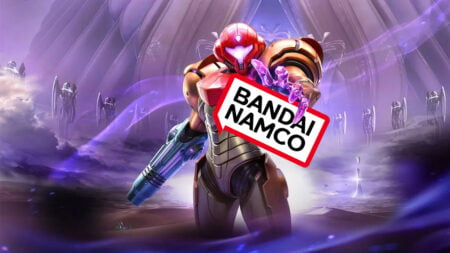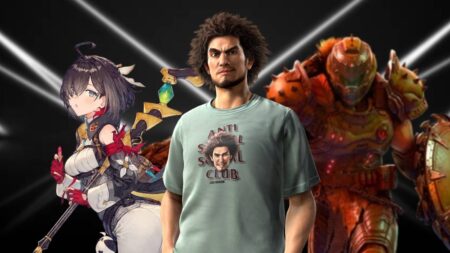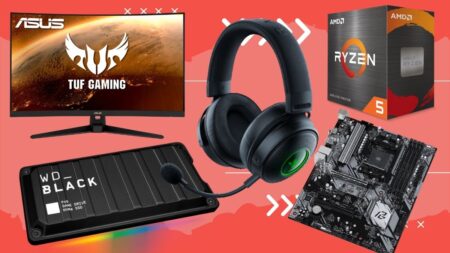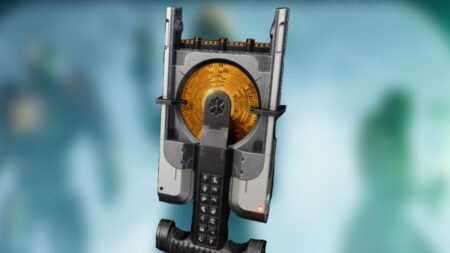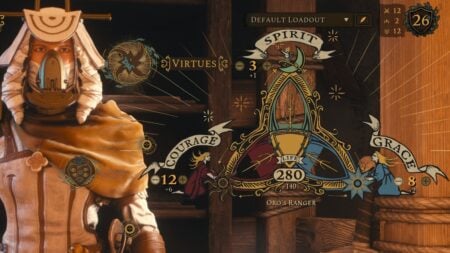Title: Monster Hunter Generations
Available on: 3DS, 2DS, New 3DS
Developer: Capcom
Publisher: Capcom
Genre: Action RPG
Official Site: https://www.nintendo.com/games/detail/monster-hunter-generations-3ds
Release Date: July 15, 2016
Where to Buy: Retail, Nintendo eShop
I danced around my prey, looking for an opening to strike. The Great Maccao – a bird-like lizard, with colorful plumage erupting from its head and spikes lining its large, flat tail – wildly jumps around the battlefield. It props itself up on its tail, launching itself at me, razor sharp teeth tearing through the air as it hurls itself forward. As it lands I rush forward, combining my sword and shield to form a devastating ax, and sink the blade into the beast. It finally goes down, after multiple attempts and plenty of potions later. As it stops flailing and finally grows still I sink my knife into it, taking its hide and claws. The mission is finally over.
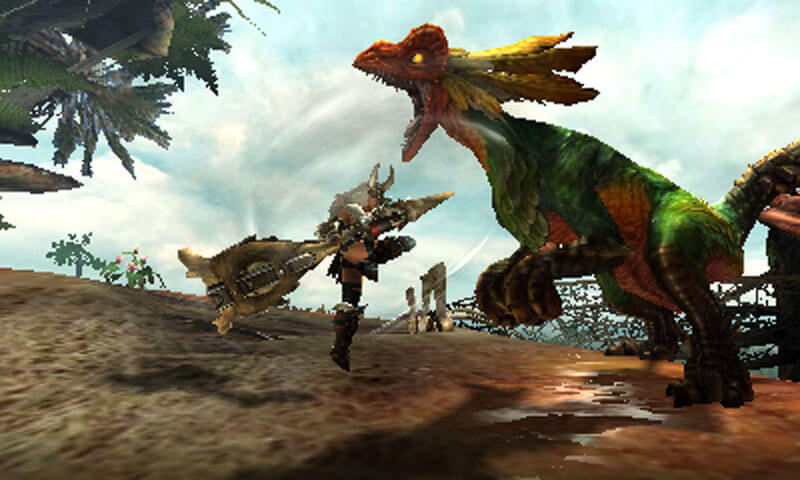
This is the core of Monster Hunter Generations. You battle mighty beasts to harvest their scales, bones, claws and pelts. These can then be turned into even more powerful weapons that can, in turn, take down more powerful monsters. It’s very much a repetitive cycle, but one with enough new revelations to keep things fresh.
You are a new researcher from the Wycademy, sent to the Bherna village to study monsters in their various habitats. This is about as much story as you’ll get, but it’s all you’ll need. The game wastes no time in getting you out into the world. And what a world it is.
There are a variety of environments to explore, each with different terrain, weather, and monsters. The game is certainly pretty for a 3DS game. The environments themselves don’t stun, but the creatures more than makeup for this. Each monster, be it a sleek raptor-like creature that zips across the sands, an armored tank that can take more than a few hits, or a deformed bug that flies through the air, spewing poison from every cavity of its body.

Even the smallest of enemies have at least one distinct feature that makes them feel like living, breathing beasts. They behave in unpredictable ways, wildly clawing at the air one moment and then running off with their tail between their legs after a big hit. And, like previous entries in the series, you have no way of seeing the health bars of the monsters you hunt.
You can only tell when they are close to death based on their actions. You may be fighting something only for it to start limping or dripping saliva after a couple of swift strikes. It makes every encounter feel less like a video game fight and more like an actual hunt, wailing on the monster until it inevitably crumbles to the ground.
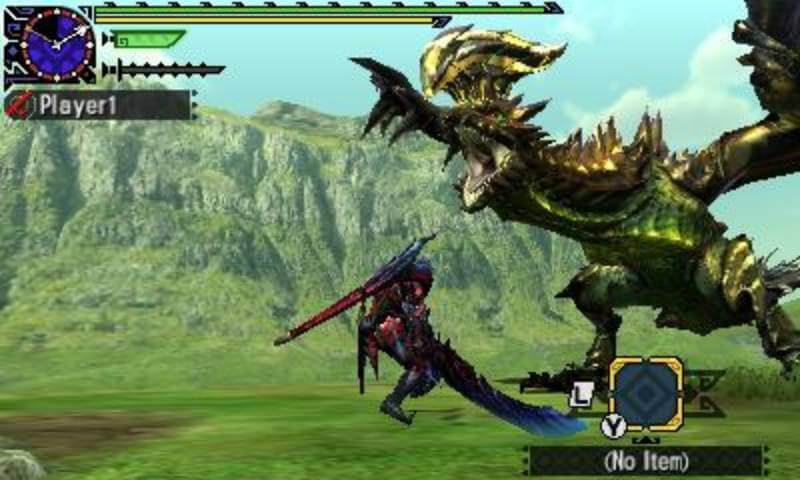
The armor is also beautifully designed, taking key features of the beasts the pieces are forged from and visually translating their power. Heavy shoulder pieces, rock solid chest plates, and fanged blades all look fantastic, clearly inspired by the game’s monsters. It’s incredibly cool to take down some of the game’s most ferocious beasts and wearing their hides as trophies.
The missions come in two variants: collect a certain number of item X, or kill X monster. The collection missions aren’t the most exciting. You run through each area, searching through random plants and bushels, hoping that you get the one item you’re desperately searching for. There are usually some basic monsters inhabiting each environment, letting you get some basic materials.
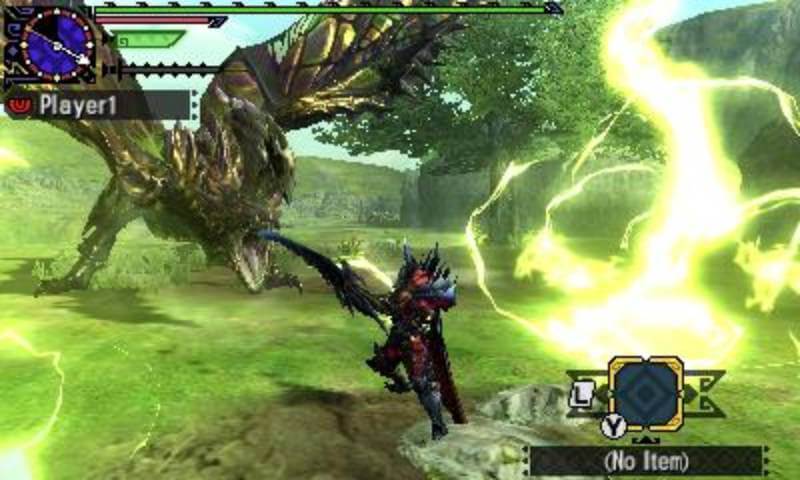
It’s important to note that all missions have time limits – most of the ones I tackled had a limit of 50 minutes – but I never timed out, always either failing or completing my objective well before the allotted time is up.
The monster hunting missions make up the meat of the game, focusing entirely on item management, precision, and timing. The combat is almost identical to previous Monster Hunter games. You select your weapon of choice and have two unique attacks at your disposal and a dodge roll. You need to learn and read the monsters patterns, knowing when to attack and when to hang back and circle your target. Animations all have to be watched in full before another action can be input. So using can item is always a perilous venture. I can’t even remember how many times I was using a health potion but was knocked to the ground by an enemy before the animation could finish, taking a chunk of health along the way.
Slashing and firing your weapons is a rather slow affair, meaning you need to carefully choose your openings and dodge incredibly precisely to minimize damage. But combat being slow isn’t a negative here; it just gives the game a more deliberate and tactical pace.

There are a plethora of items that can be used to track, trap, and daze monsters as you wage a fierce war against them. Learning the patterns is only half of the battle; knowing when to plant certain traps and how best to utilize them takes a lot of time to learn but augments combat in important ways.
Monster hunter Generations does add one major addition to combat. The new hunting styles let you choose what kind of combatant you want to be. They come in four flavors: Guild Style, Striker Style, Aerial Style, and Adept Style. Each one slightly changes your move set, also giving players a special ability that can be used to deal heaps of damage.
I went with the Aerial Style, which turns forward dodge into a flip that can be used to push off of enemies and vault yourself into the air, ready to mount monsters and pull off some airborne hits. It greatly changed the way I approached encounters, knowing that I could leap into the air and come crashing down on a monsters head at any moment.
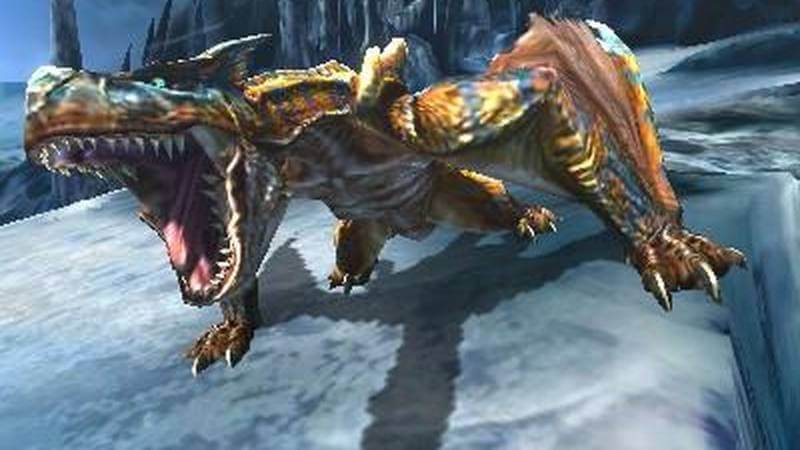
I played on the New 3DS XL, using the second c stick to manipulate the camera much more easily. I wasn’t able to try it on older models of the system, but I would definitely recommend playing it on the New 3DS if you can. The extra camera mobility makes keeping track of the hectic action much easier.
But don’t think that it’s all just conquering massive beasts and collecting herbs. You’ll need to defeat the same creature a number of times to get the materials you need to build better armor and weapons. It isn’t a fast process, but it’s a fun one. Decking out your hunter with armor that not only has good stats but also just looks powerful is incredibly satisfying, rewarding you for the grinding and plenty of deaths that you will suffer through.
Monster Hunter Generations is an RPG, but you won’t be gaining levels or filling an experience bar. All of your character improvement is done through armor building and upgrading. These systems aren’t explained in the best detail, but it’s the most straightforward that it has ever been. If you are a newcomer to the series, Monster Hunter Generations is a fantastic starting point.
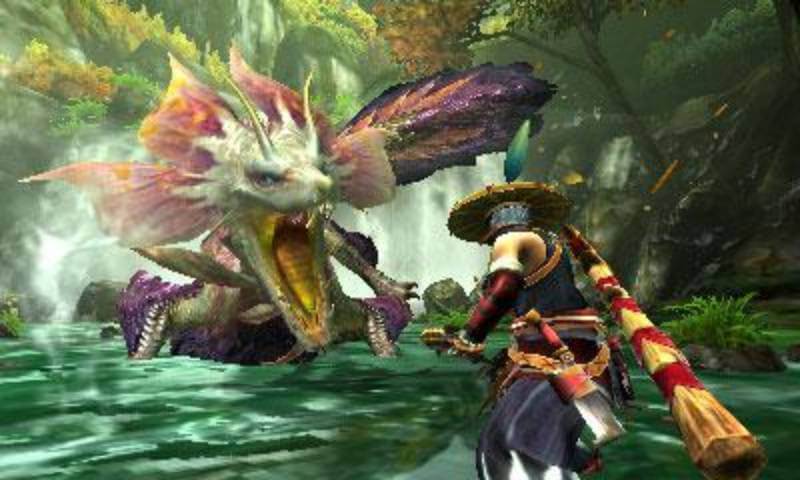
Online play hasn’t seen any changes and works as well as ever. You can team up with up to three other hunters to take down monsters that sometimes prove too much for one person. It’s a hectic experience but one that feels truly epic, seeing four fully equipped hunters tearing through some of the strongest enemies in the game.
You can take on every mission in the game single-handed, but you might find it more than a little difficult, so getting together a crew of trusted friends to take tear through each mission makes the title more manageable.
Monster Hunter Generations is a culmination of the series, bringing back some of the biggest, baddest beasts of the past while introducing some terrifying new opponents. The combat and armor forging is as solid as ever, taking plenty of time but being worth every single second. It’s a great title for newcomers and veterans alike, delivering everything that the series is known for in its best form.
Gameplay: Visceral, deliberately paced combat with plenty of grinding and upgrading.
Graphics: Everything looks crisp and runs smoothly, even on the small screen.
Sound: Music reaches a crescendo during battles, bolstering the action.
Presentation: Everything is easy enough to understand but the game does a poor job of telling you where to find things.
[review]


